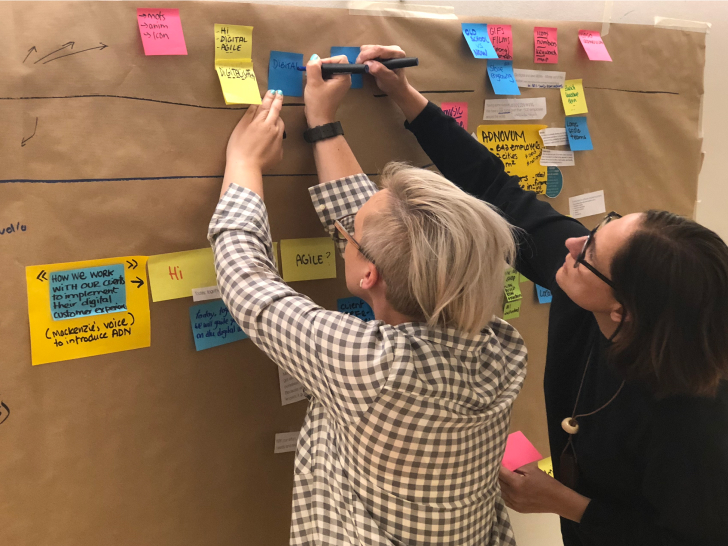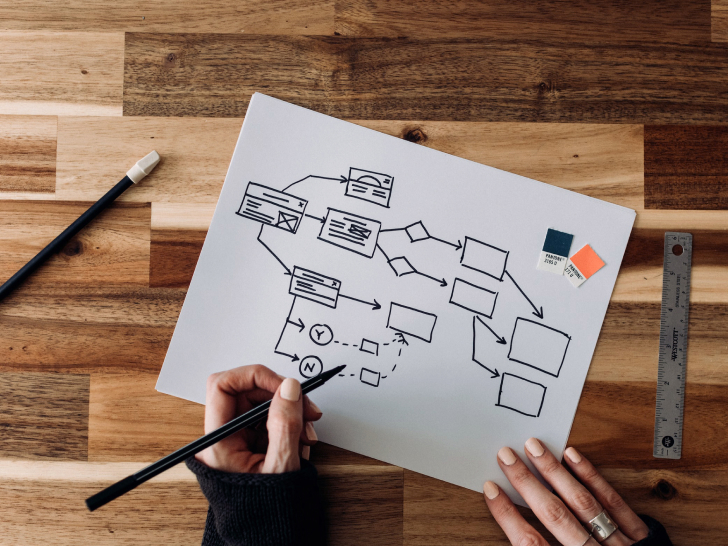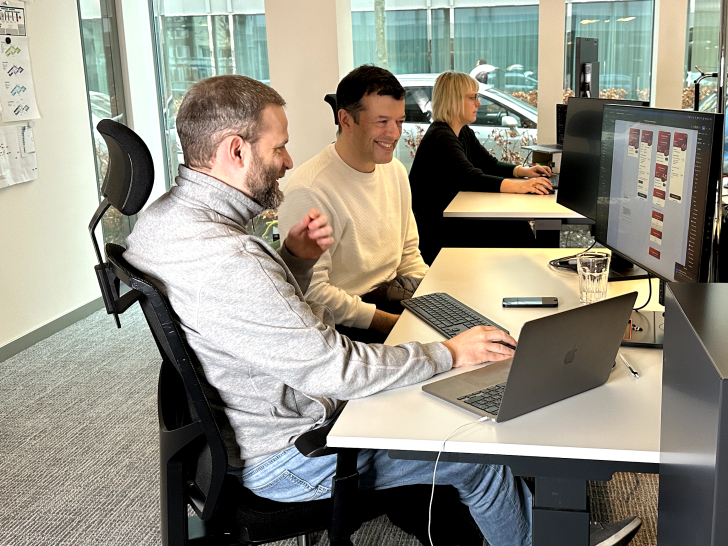Ready to transform your business?
Let us know what your challenge is.

From strategy to implementation, creating a seamless and useful experience requires certain steps to figure out what users and stakeholders need.

Combining stakeholder goals and user intentions, we clarify all known factors and develop a strategy of what we want to build.

Different roles in and outside the organization lead to differences in behavior and expectations. We look at the surrounding circumstances and work out objectives for each task to achieve.

With a clearer picture of behavioral patterns and defined goals, we create user stories, which form the foundation for prototyping solutions.

The strategic goals, user behavior, roles, and patterns form a collection of insights. The resulting user stories are validated with the team, which helps us find a clear direction for further development.

Flow diagrams help us visualize the path a user follows to complete the desired task. Then we create low-fidelity wireframes, transitioning to more detailed and interactive prototypes.

Interactive prototypes help us validate the created solutions. With these insights we adjust flows and screens until they reach a maturity that’s ready for production.

Agile development already begins in the delivery phase. Prototypes with user flows are implemented in the final application, which is then tested again with its actual users.
